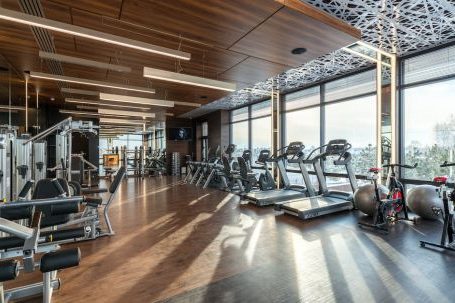Mastering a sport requires more than just physical fitness and strength. It involves honing your technique and skills to perform at your best. Sports-specific training is the key to achieving peak performance in any sport. By focusing on the specific demands and movements required for your chosen sport, you can fine-tune your technique and take your performance to the next level. In this article, we will explore the importance of sports-specific training and how you can incorporate it into your training routine.
Understanding the Demands of Your Sport
Every sport has its own set of physical demands and specific movements. Whether it’s running, jumping, throwing, or swinging, understanding the specific skills and movements required for your sport is essential. By analyzing the movements and demands of your sport, you can identify the areas that need improvement and tailor your training accordingly.
Improving Technique
One of the main goals of sports-specific training is to improve technique. Technique refers to the specific way you perform the movements and skills required for your sport. By focusing on proper form and technique, you can optimize your performance and reduce the risk of injury. For example, if you’re a tennis player, sports-specific training can help you improve your serve technique, footwork, and overall shot accuracy.
Targeting Muscle Groups
Sports-specific training allows you to target the specific muscle groups used in your sport. By strengthening these muscles, you can enhance your performance and prevent injuries. For instance, a basketball player may focus on exercises that target the leg muscles used for jumping, such as squats and plyometric drills. By strengthening these muscles, the player can improve their vertical jump and overall agility on the court.
Balance and Coordination
Sports-specific training also helps improve balance and coordination, which are crucial for success in any sport. By incorporating exercises that challenge your balance and coordination, such as single-leg exercises or agility ladder drills, you can improve your body’s ability to move efficiently and react quickly during game situations.
Speed and Agility
Speed and agility are essential for many sports, such as soccer, basketball, and track and field. Sports-specific training can help improve your speed and agility by incorporating drills that mimic the movements required in your sport. For example, a soccer player may focus on exercises that improve their acceleration, change of direction, and sprinting speed.
Mental Preparation
Sports-specific training goes beyond physical preparation. It also encompasses mental preparation. Mental toughness, focus, and concentration are crucial for success in any sport. By incorporating mental training techniques, such as visualization and mindfulness exercises, you can enhance your mental resilience and ability to perform under pressure.
Incorporating Sports-Specific Training into Your Routine
To incorporate sports-specific training into your routine, start by identifying the specific skills and movements required for your sport. Once you have a clear understanding of these requirements, you can design a training program that targets those areas. This may involve a combination of strength training, agility drills, balance exercises, and sport-specific drills.
It’s important to gradually progress your training intensity and complexity to avoid overtraining and injuries. Incorporate rest days into your training schedule to allow your body to recover and adapt to the demands of your sport.
Conclusion: Take Your Performance to the Next Level
Sports-specific training is the key to taking your performance to the next level. By understanding the demands of your sport, improving technique, targeting muscle groups, enhancing balance and coordination, and focusing on mental preparation, you can fine-tune your technique and optimize your performance. Incorporate sports-specific training into your routine and watch your skills and performance soar.





